Fashion and Style—What’s it All About?
Richard Boch’s fashion week chat with Marc Jacobs, makeup artist Sandy Linter, Debi Mazar and hair stylist Harry King.
It’s New York Fashion Week—so let’s talk fashion and style and what it’s all about.
Style of course is a distinctive way of doing something. You can’t buy style. Someone or something can point you in a certain direction but after that, it’s all on you. Fashion on the other hand, whether trend-driven or timeless, is a whole other animal. Putting fashion and style together and allowing them to speak to one another—well, it may be effortless for some, less so for others. I always try to keep it simple—try being a dangerous word especially when anyone, including myself, might try too hard.
As a child, a bow tie and suspenders worked for me, or at least my mother thought so. As a teenager, a pair of ragged jeans and a Rock ’n’ Roll t-shirt was all it took—youth still very much on my side. When I moved to Bleecker Street in NYC during the mid-1970s it was all about a black leather motorcycle jacket and a pair of black boots or high-top Converse sneakers. Today Comme de Garcons slaps a heart-shaped face with big eyes on those same sneakers, calls it PLAY and in a strange way, deflates a classic while inflating the price. I wore a lot of Comme in the 1990s until Prada stepped in, changed the silhouette and in a way changed everything. To me, that’s fashion—style is how we pull it off.
Looking back with an eye on the future, I started working at the Mudd Club in early 1979. Studio 54 had been raging for nearly two years and both style and fashion were careening full speed through those two notoriously selective doors, onto the dance floors and oftentimes into the bathrooms and basements. CBGB was still happening and places like Crisco Disco, the after-hours dance club-coke bar–inferno were, in their own strange and wild ways, runways of fashion influence. Style was off the charts and what people wore was often both fashion-forward and cutting-edge DIY.
The make-up artist Sandy Linter and the hairstylist Harry King were both legends by 1980 and on everyone’s radar—whether it was working with Patti Hansen or Gia Carangi for the cover of Vogue or Cosmopolitan, they had both arrived and were doing their own thing. Debi Mazar was still the loveable underage wild child, wearing a men’s sharkskin suit and a pork pie hat. Working alongside me at the Mudd Club, Debi’s sense of style was already off the charts. Marc Jacobs was another teenager who was just getting started. Working in the stockroom of the Charivari boutique while attending Parsons School of Design—both places became stepping stones for a force who would become one of, if not the biggest name in fashion.
Circling back to 1979—the Mudd Club door was the perfect vantage point, and before long we were all in the mix in our own different ways. Whether it was style or fashion, time or place, we were all connected.
Now, with the fall 2024 NYC Fashion Week getting underway, I had the opportunity to ask each of them about a memorable moment that never fails to make them smile.
Let’s see what they had to say.

Getting Dressed for The Met Ball May 2023. Photo Nick Newbold
Hello Marc. It’s always a bit of a challenge asking someone to look back and recall a moment or memory that speaks to both inspiration and appreciation of where they’ve been and what they’ve accomplished. So many factors to touch upon whether it’s coming of age in NYC, your namesake collections, the Vuitton legacy or your appreciation of the visual and performing arts, not to mention the written word. Then there are the friends and collaborators, who have been there and remain part of it all—everyone from Naomi and Kate Moss to Sprouse and Steven Meisel to your latest campaign with Juergen Teller and Cindy Sherman. If you sit back, close your eyes and smile, what do you see?
Marc Jacobs: The year was 1970 and I was seven years old. I distinctly remember peeking into my mother’s closet and seeing a satiny ivory and glittery gold brocade dress hanging next to its matching coat. The dress was sleeveless, the coat had a big white fur collar and the sleeves had deep fur cuffs. It was the most beautiful thing I had ever seen. And while I didn’t have the exact vocabulary at that age or know what style, glamour and fashion was, I understood—and can still feel—how that extraordinary ensemble moved me. It was that moment, in that experience that would set the stage for a life spent chasing that feeling through fashion design.
Over the subsequent years, I would watch my mother and later, my grandmother, as they would get dressed up and apply their makeup, fix their hair, choose their outfits, jewelry, shoes and handbags. It was a mesmerizing ritual that I never grew tired of observing. Every caterpillar-like eyelash, the smell of hairspray and perfume, the dresses, coats, sweaters, skirts, pumps and boots—the transformation was always dazzling as I gazed with wonder and joy at the ritual of getting dressed.
By nine years old, I was utterly obsessed with clothes. From choosing my back-to-school outfits to parading around New York City as though I was the star of my own movie. As for my other interests, they were all intrinsically connected to fashion, style and glamour—from the costumes in movies and theatre to the style and charisma of musicians and their fans. Over the years that followed, my own fashion looks were constantly changing and ever-evolving but what I dreamt of most was someday designing clothes. A dream that still holds true today as I continue to summon up the wonder and awe of my seven-year-old self.
If all the world is a stage, then identity is nothing but a costume.
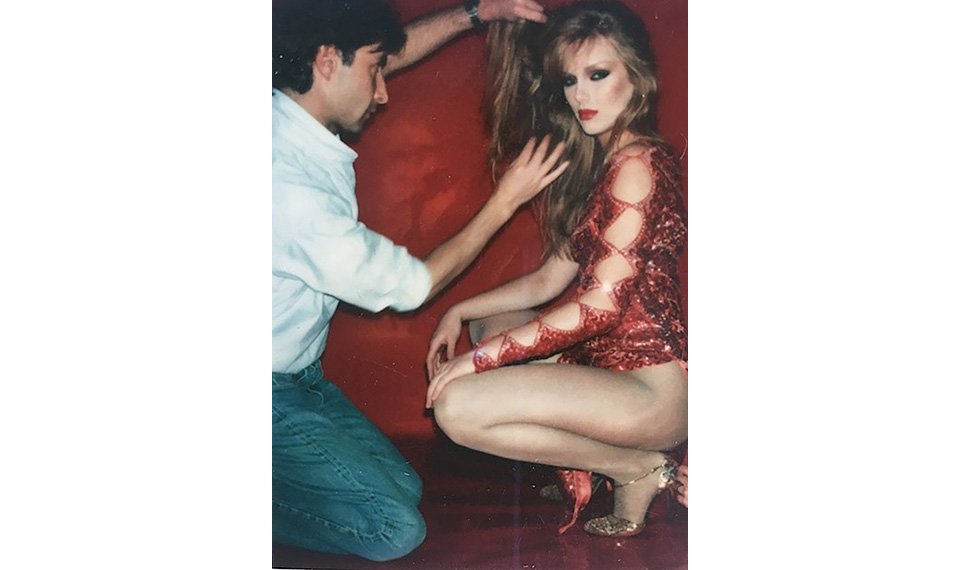
Harry King and Patti Hansen, late 1970s. Photo Barry McKinley courtesy Harry King
Hello Harry. Going back as far as the late 1970s and well into the 1980s you were very much responsible for the way women not only wore their hair but how people thought about hairstyles and fashion. Was there a point early in your career when you realized it was time to change the way hair was being cut. Was there a person whose hair you were doing, either for a shoot or for an event, when the Harry King cut just happened?
Harry King: In the early 1970s I was working for MichaelJohn, the top salon in London and my career was starting to blossom. I was on a shoot, the model showed up and she looked great. She had a decent haircut and I thought I really don’t need to do much, so all I did was push her hair around into different shapes. It was a big success and it was then that I realized making a girl look real and not overdone was the way to go. At the time hair was very neat, mostly one length, rollers, under the dryer, when I came up with a new haircut—short layers on top and getting longer around the face. I gave it a whirl and what a success that was—I had changed the way hair was being cut. Cosmopolitan called the haircut, The Lion’s Mane.
When I moved to NYC, I didn’t have a portfolio and everyone kept asking me “Where’s your book?’ I was still having work published in London so I got a friend at MichaelJohn to send me tear sheets and I put a book together of all the girls with undone hair. I had my first job with Vogue four months later and all I did was the undone hair. Everyone embraced it—and it was a different look for them—natural, layered and yes, undone. Richard Avedon loved it, as did Scavullo, all the photographers did—well let’s say most of them.

Harry King and Rosie Vela, 1996. Photo Victor Skrebenski Courtesy Harry King
This was the 1970s. I was busy working in NYC when Rene Russo called me late one night. She told me Vogue was taking her to Peru, wanted her to cut her hair off and she requested me—so off we went—and off went her hair, into a short shag that was a huge success. The beauty editor at Vogue told me they had never had so many feedback calls and letters about a haircut before. Then I cut Patti Hansen’s hair that way, and nearly everyone else.
I loved my job but being a fashion person, I soon grew a bit tired of that look so I came up with the big hair concept purely by chance. I was doing a lot of Cosmo covers, just going into the studio and making the girls look pretty. Scavullo loved it, so did the editor-in-chief Helen Gurley Brown and by the late 1970s and early 1980s, big hair reigned. I was on location for Vogue with Gia Carangi and Kim Alexis when the stylist and editor Polly Mellen came over to me. She has an issue of Cosmopolitan under her arm with Kelly Emberg on the cover and she says, “I want this hair for Vogue.” So, I did it—and Gia and Kim were the first of the big hair girls for Vogue.
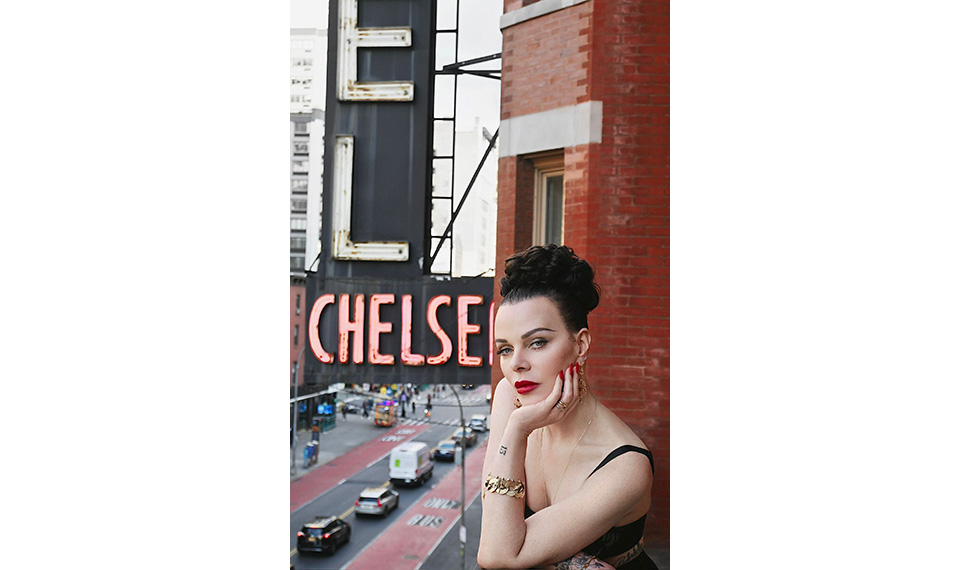
Debi Mazar Hotel Chelsea NYC, 2023. Photo Ruven Afanador courtesy Debi Mazar
Hi Debi. We’ve known each other since you were fifteen years old and you’ve always carried yourself with great style. Whether it was the club days, a movie or television role or a fashion campaign, it was your talent and that sense of style that people were after. As for fashion, you made that happen regardless of what you wore. Tell me about the what, when and why fashion began to resonate and continues to mean something to you.
Debi Mazar: Fashion has always meant something to me. Growing up in Queens, NY with a young single mom and a stylish grandma I became interested in creating my own looks early on. Style ideas came from grandma’s closet and my mother’s record album covers—1960s girl groups like The Ronettes, Salsa on the Fania label and Jazz and Rock groups. My uncle’s Playboy magazine collection also added a bit of something. Then, there were all those 1960s and ’70s shows and films that I’d watch with my grandmother.
I got my first pair of white patent leather go-go boots when I was seven and my first eyeglasses were through Medicaid—a leftover 1950s style, kind of like Buddy Holly or Elvis Costello. Money was tight and by the time I was a teen I began hitting secondhand shops and getting creative.
I stole my Gloria Vanderbilt jeans from Macy’s before there was security beepers and had my share of disco jeans and velour tops—the only period where I jumped on a trend. My hair was pretty much always in a top knot bun, becoming my life-long style.
When I finally left home at fifteen it was still the era of Disco and Punk and I hit the city with a vengeance. Working for Mickey Ruskin at One University Place, as well as Mudd Club and Danceteria, I was surrounded by great, young, creative people—and it was wonderful! I’ve been lucky getting to know some great fashion designers and illustrators—and I’ve been schooled by gay men and very chic women.
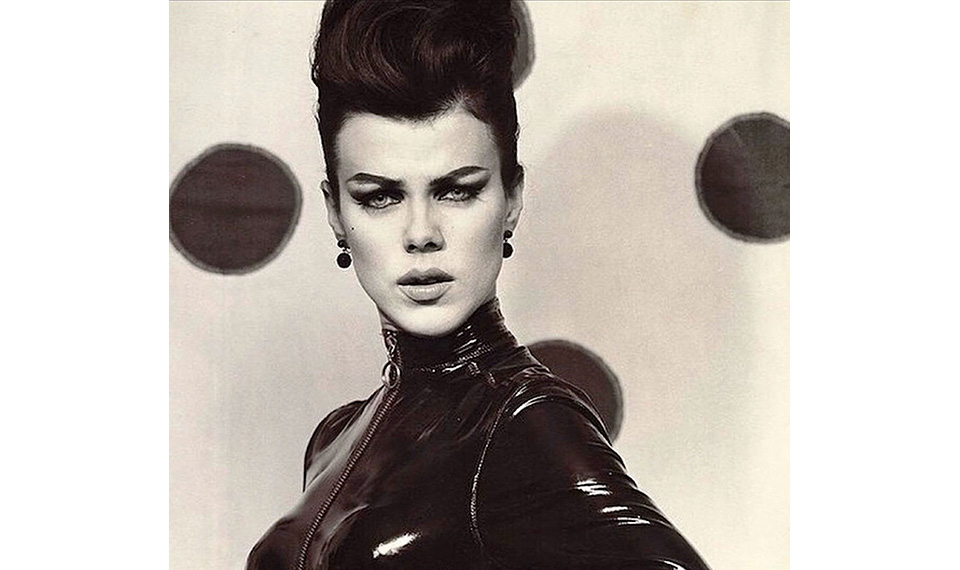
Debi Mazar NYC, 1990s. Personal collection courtesy Debi Mazar
I don’t really have a favorite period of my life, as far as looks—but there have been some bad ones. I’ve traveled the world, picking up flea market finds and putting together my own style. I don’t really use a stylist, even when working with some great photographers—I simply can’t afford them. Occasionally I still wear things I’ve had since my teens—if my daughters haven’t taken them from me—even though I gravitate towards tailored and Flamenco-inspired looks. I don’t really love going to fashion shows much anymore (sorry Fashion Week) but still go to a few select shows in support of my friends.
Growing up and living in NYC for years, you step outside and see thousands of people in a day. I talk to everyone and I feel the need to be groomed, put together and ready for anything!
Living in Italy now, I pride myself on being in touch with ancient history, nature and having the amazing resource of fabrics, seamstresses and incredible flea markets. I have a wonderful collection of costume jewelry and I love giving my clothes, shoes and jewelry to my daughters, my friends and even strangers. I believe fashion is meant to be shared—and I’ve been blessed with the generosity of so many.
Good fashion or bad—I just want people to feel good and hopefully look great too!
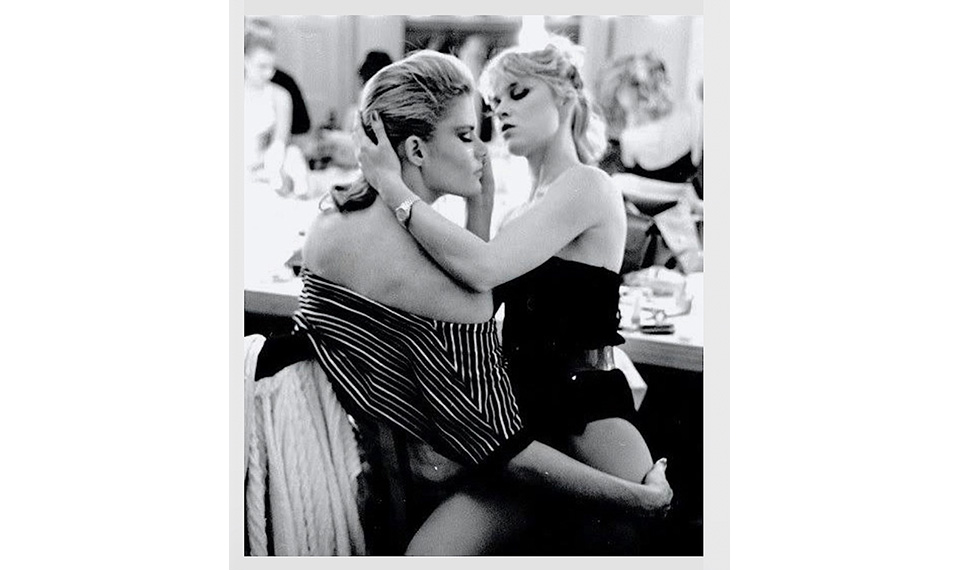
Sandy Linter applying makeup, 1978. Photo Stan Shaffer
Hi Sandy. You’ve been a fashion and celebrity makeup artist for years, your book Disco Beauty is a classic, and you’ve worked with some remarkable people—everyone from Gia Carangi and Elizabeth Hurley to Diana Ross, Bette Midler and Brooke Shields, even Linda and Johnny Ramone. Thinking about fashion and style, whether you were on a shoot, hanging out at Studio 54 or heading downtown to the Mudd Club, is there a special moment or memory—a moment either directly or indirectly fashionable—that still has the power to make you shake your head and laugh with amazement and disbelief?
Sandy Linter: This is just too easy. I can shake my head now in disbelief to the many, many nights when I went out in the 1970s early 1980s. There was the night with Gia, we were on a date and I wanted to go to Studio 54. We got into a cab and she mentioned the Mudd Club. I had never heard of it. We were driving further and further downtown, and I shot her a look. Are we there yet? Where in the hell….
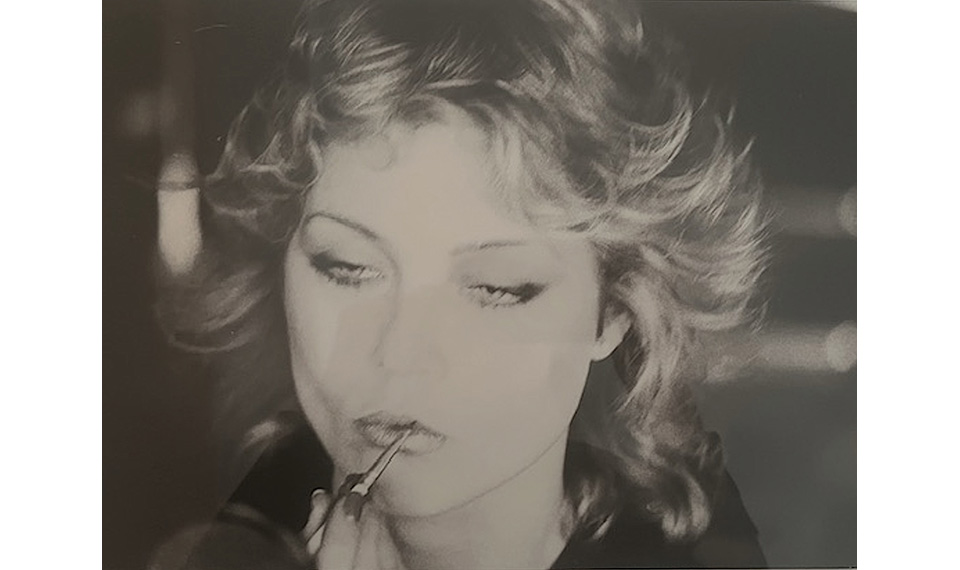
Sandy Linter applying her own makeup, 1978. Photo Harry King
We got out of the taxi and I saw a few people milling about in front of the club. There was a forlorn-looking chain (no velvet rope at this place). I stiffened up because it was in such a desolate spot.
Gia and I went to get on the line where there was no one else on the line. As we did, I saw Gia nod to a photographer who took our photo. Decades later a Gia fan told me she found photos of myself and Gia on a site called Punks and Provocateurs. Those photos are treasures.
***
INTERVIEW Richard Boch
PHOTOGRAPHY Courtesy of the artists
Richard Boch writes GrandLife’s New York Stories column and is the author of The Mudd Club, a memoir recounting his time as doorman at the legendary New York nightspot, which doubled as a clubhouse for the likes of Jean-Michel Basquiat, Keith Haring, Debbie Harry and Talking Heads among others. To hear about Richard’s favorite New York spots for art, books, drinks, and more, read his Locals interview—here.